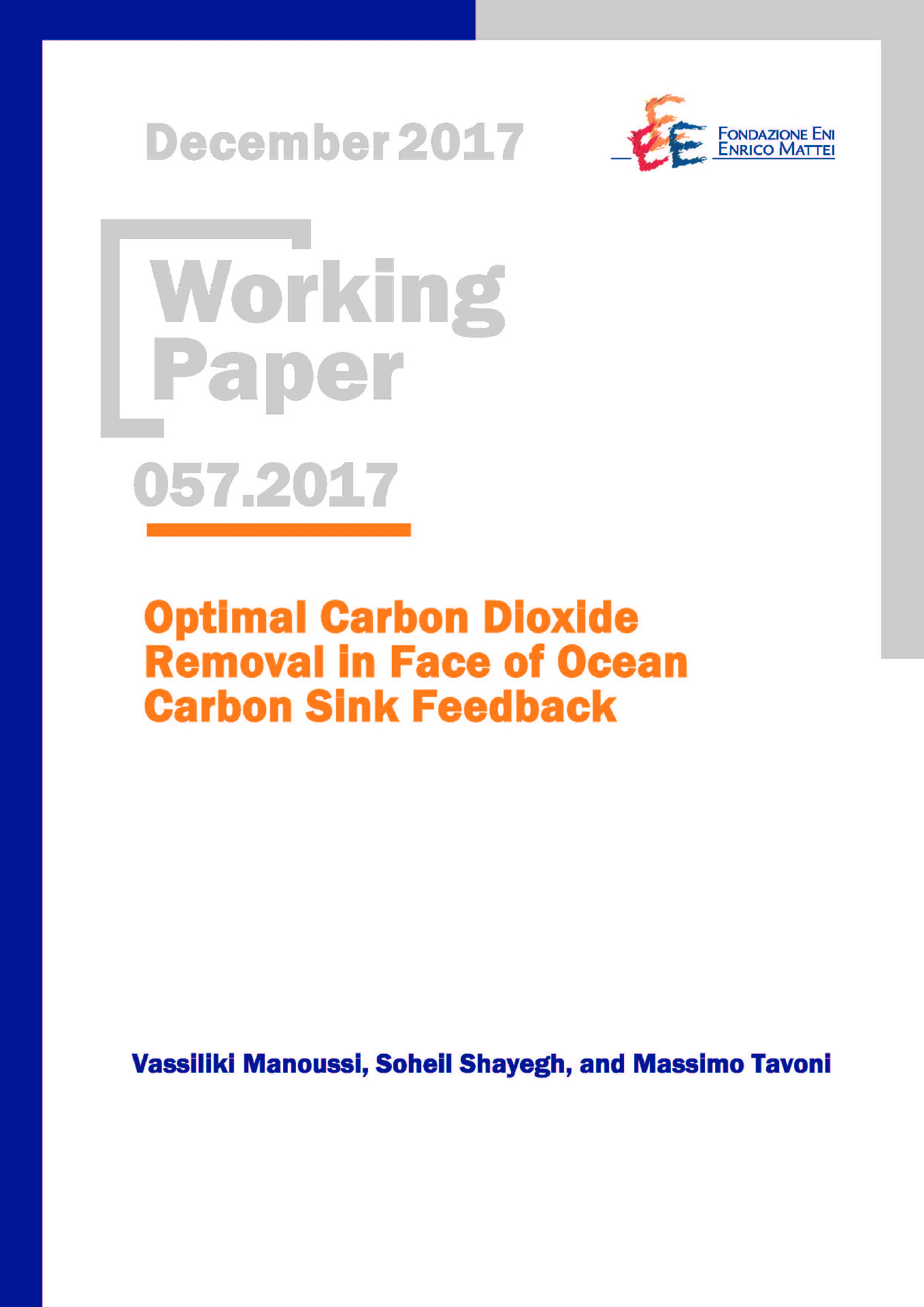Optimal Carbon Dioxide Removal in Face of Ocean Carbon Sink Feedback

12.12.2017
Vassiliki Manoussi (Fondazione Eni Enrico Mattei, CMCC); Soheil Shayegh (Fondazione Eni Enrico Mattei, CMCC); Massimo Tavoni (Fondazione Eni Enrico Mattei, Politecnico di Milano)
Q53, Q54
Climate Change, Outgassing, Carbon Dioxide Removal, Integrated Assessment Model (DICE)
Mitigation, Innovation and Transformation Pathways
Massimo Tavoni
Carbon dioxide removal (CDR) is a potentially important climate strategy for attaining low climate stabilization objectives. However, climate analysis has indicated a possible weakening of the ocean carbon sinks -the largest in the world- in relation to CDR deployment. Here, we provide an economic appraisal to assess the sensitivity of CDR and conventional abatement to CO2 outgassing from the oceans. We develop a theoretical framework to study the impact of the ocean-to-atmosphere transfer on the optimal mitigation strategies under different regimes that control the relationship between CO2 outgassing and the amount of CDR. We show that the optimal levels of emissions and CDR are correlated to the effectiveness of CDR expressed as a linear function of atmospheric concentrations. We incorporate this effect into an integrated assessment model of climate and economy (DICE model) and confirm the theoretical findings with numerical simulations. Further, we perform a sensitivity analysis to find the range of optimal abatement and CDR actions under different values of the CDR effectiveness coefficient.
***
Suggested citation: Manoussi, V., S. Shayegh , M. Tavoni, (2017), ‘Optimal Carbon Dioxide Removal in Face of Ocean Carbon Sink Feedback’, Nota di Lavoro 57.2017, Milano, Italy: Fondazione Eni Enrico Mattei
